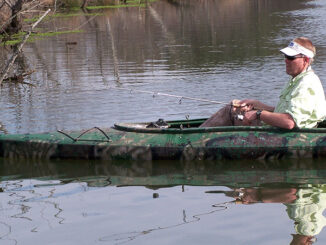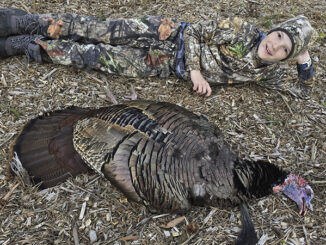
While guide Zakk Royce confines most of his perch fishing to Lake Gaston along the North Carolina-Virginia border, you’d be hard-pressed to name any reservoir in North Carolina’s Piedmont or South Carolina’s Midlands that isn’t chock full of them.
The white perch population has become so widespread that neither state considers them gamefish, which means no creel limits and few, if any, restrictions on catching them, including the use of cast nets.
Probably the most-popular and productive method for catching white perch on a consistent, year-round basis is by vertical jigging. Some anglers use a ¼- to ½-ounce metal jigging spoon; Royce prefers a Sabiki rig, which incorporates five to 10 droppers off the main line, each connected to a tiny hook and fly. A weight at the rig at the end of the rig carries it to the bottom, where it is jigged vertically.
The secret to fishing the Sabiki is not to reel the line up at the first bite, but to leave it down long enough to load all of the droppers with fish.
“Perch are so aggressive and so competitive, on a good bite it doesn’t take more than about 30 to 45 seconds to load the rig up,” said Royce, who has started offering guided perch trips for his clients. “One thing I have learned if I’m perch fishing with more than one rod is you have to have one rig in the water at all times. If you load both up and take them out of the water, the school will lose interest and move off, and then you either go find another or wait for the school to move back in.”
For trolling and vertical jigging, Royce recommends a 6-foot, light-action spinning rod and reel spooled with 6- to 10-pound test line.




